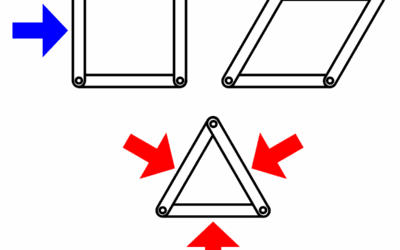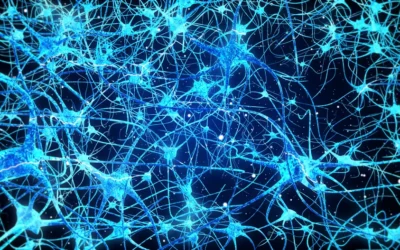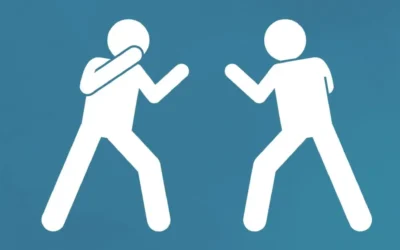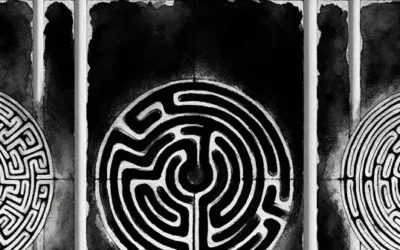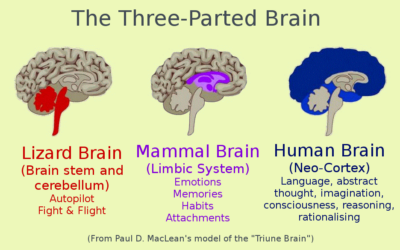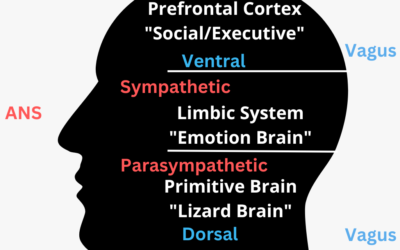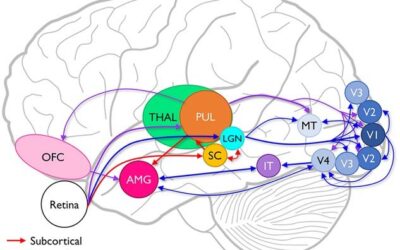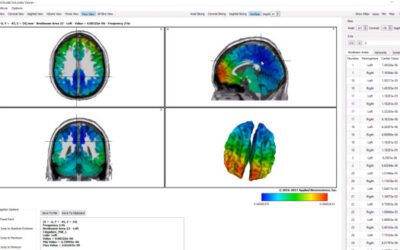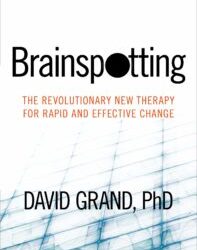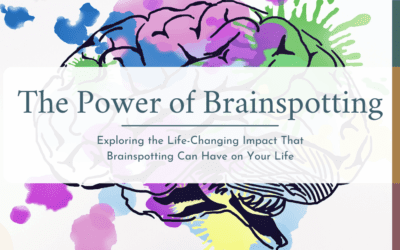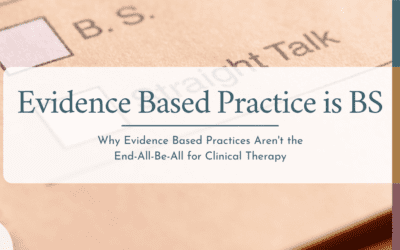A comprehensive consilient analysis examining how contemporary neuroscience—including Karl Friston’s Free Energy Principle, Mark Solms’ Neuropsychoanalysis, Jaak Panksepp’s Affective Neuroscience, and Stephen Porges’ Polyvagal Theory—adjudicates the historical debates between Freud, Jung, and Adler on trauma, dissociation, repression, and the nature of the Self. Explores the integration of Somatic Experiencing, Brainspotting, and Internal Family Systems with classical depth psychology.
Neuroscience and the Brain: Understanding Mental Health Through Brain Science
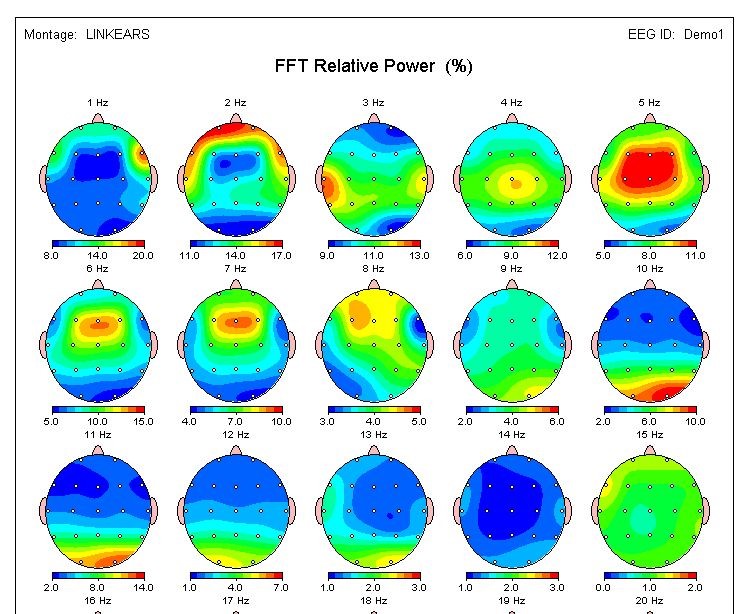
Applying Cutting-Edge Brain Research to Therapeutic Practice in Birmingham
Welcome to Taproot Therapy Collective’s exploration of how contemporary neuroscience research transforms our understanding of mental health, trauma recovery, and therapeutic healing. As Birmingham’s leading integrative therapy practice, we recognize that understanding brain function, neuroplasticity, and neural networks provides crucial insights that enhance therapeutic effectiveness while offering hope and empowerment to individuals seeking lasting psychological transformation.
Understanding Neuroscience-Informed Therapeutic Practice
Our Neuroscience and the Brain blog category examines how brain research illuminates the biological foundations of mental health conditions, therapeutic change processes, and recovery mechanisms that inform more effective and targeted treatment approaches. We explore how understanding neural networks, neurotransmitter systems, and brain development patterns enhances evidence-based therapeutic interventions while providing clients with empowering knowledge about their brain’s capacity for healing and growth.
This approach builds on the comprehensive therapeutic services detailed on our main services page, where specialized modalities including EMDR, Brainspotting, somatic therapies, and trauma-informed care are enhanced by neuroscientific understanding that explains how these interventions facilitate neural healing and psychological integration at the brain level.
The Neuroplastic Brain and Therapeutic Change
Neuroplasticity and Mental Health Recovery represents one of neuroscience’s most revolutionary discoveries for mental health treatment, demonstrating that the brain retains capacity for structural and functional change throughout life. Understanding how therapeutic experiences create new neural pathways, strengthen healthy networks, and reduce problematic patterns provides both scientific validation for therapeutic approaches and hope for individuals struggling with seemingly intractable mental health conditions.
Research from Harvard Medical School and Stanford University School of Medicine reveals how psychotherapy, meditation, and behavioral changes create measurable alterations in brain structure and function, providing biological evidence for therapeutic effectiveness while informing more targeted and efficient treatment approaches.
Neural Networks and Psychological Symptoms examines how understanding brain network dysfunction illuminates the biological basis of depression, anxiety, PTSD, and other mental health conditions. The default mode network, salience network, and executive control network interactions provide frameworks for understanding how psychological symptoms emerge from neural dysregulation while informing therapeutic approaches that target specific network imbalances.
Critical Periods and Developmental Neuroscience explores how brain development patterns throughout childhood, adolescence, and young adulthood create both vulnerabilities and opportunities for intervention that inform therapeutic timing, treatment approaches, and family therapy strategies that honor developmental considerations while maximizing therapeutic effectiveness.
Trauma, PTSD, and the Brain
Neurobiology of Trauma and PTSD examines how traumatic experiences affect brain structure and function through alterations in the amygdala, hippocampus, prefrontal cortex, and neural connectivity patterns that create PTSD symptoms including hypervigilance, intrusive memories, emotional dysregulation, and dissociation. Understanding trauma’s neurobiological impacts provides crucial frameworks for developing effective treatment approaches.
EMDR and Neural Mechanism explores how Eye Movement Desensitization and Reprocessing therapy facilitates trauma processing through bilateral stimulation that appears to enhance interhemispheric communication, memory consolidation, and neural integration. Research from Mount Sinai School of Medicine provides neurobiological understanding of how EMDR creates therapeutic change at the brain level.
Brainspotting and Subcortical Processing examines how this innovative therapy accesses subcortical brain regions including the brainstem and limbic system where trauma memories may be stored below conscious awareness. Understanding how eye positioning affects neural activation provides insights into Brainspotting’s effectiveness for processing complex trauma and somatic symptoms.
Lifespan Integration and Memory Networks explores how this therapy facilitates neural integration across memory networks and developmental time periods, supporting healthy identity formation and trauma resolution through repetitive activation of positive memory networks that strengthen resilience and self-coherence.
Neurotransmitter Systems and Mental Health
Serotonin, Depression, and Mood Regulation examines how serotonin system dysfunction contributes to depression, anxiety, and mood disorders while exploring how both medication and psychotherapy influence serotonin function through different but complementary mechanisms. Understanding neurotransmitter systems helps inform integrated treatment approaches that combine therapeutic and medical interventions.
GABA, Anxiety, and Nervous System Regulation explores how the brain’s primary inhibitory neurotransmitter system affects anxiety, panic, and stress responses while examining how therapeutic approaches including somatic therapy, breathing practices, and mindfulness support GABA function and nervous system regulation.
Dopamine, Motivation, and Reward Systems investigates how dopamine dysfunction contributes to depression, addiction, ADHD, and motivation difficulties while exploring therapeutic approaches that support healthy dopamine function through behavioral activation, achievement experiences, and pleasure restoration.
Oxytocin, Social Connection, and Therapeutic Relationships examines how the “bonding hormone” facilitates therapeutic relationships, social healing, and attachment repair while exploring how therapy experiences that increase oxytocin support recovery and psychological integration.
Sleep, Circadian Rhythms, and Mental Health
Sleep Neuroscience and Psychological Wellbeing explores how sleep stages, particularly REM sleep, support memory consolidation, emotional processing, and neural maintenance that directly impact mental health. Understanding sleep’s role in psychological functioning informs comprehensive treatment approaches that address both sleep quality and mental health symptoms.
Circadian Biology and Mood Disorders examines how disrupted biological rhythms contribute to depression, bipolar disorder, and anxiety while exploring therapeutic approaches that support healthy circadian function through light exposure, sleep hygiene, and lifestyle interventions that enhance natural biological rhythms.
Research from University of Pennsylvania Sleep Medicine demonstrates strong bidirectional relationships between sleep quality and mental health that inform integrated treatment approaches addressing both sleep and psychological symptoms.
Meditation, Mindfulness, and Brain Changes
Mindfulness and Neural Plasticity examines how meditation practices create measurable changes in brain structure and function including increased gray matter density in areas associated with attention, emotional regulation, and self-awareness while decreasing amygdala reactivity and default mode network activity associated with rumination and anxiety.
Contemplative Neuroscience Research from institutions like University of Wisconsin-Madison Center for Healthy Minds and Emory University School of Medicine provides scientific validation for contemplative practices while informing therapeutic applications of mindfulness and meditation that support neural healing and psychological development.
Attention Networks and Cognitive Training explores how meditation and mindfulness practices strengthen attention networks, executive function, and cognitive flexibility that support therapeutic goals while providing practical tools for emotional regulation and psychological resilience.
Birmingham Applications of Neuroscience-Informed Therapy
Living in Birmingham, Alabama, creates unique opportunities for applying neuroscience research to local mental health challenges including trauma recovery from historical events, stress management in urban environments, and supporting healthy brain development in children and adolescents through family therapy and community interventions.
Birmingham’s medical research institutions including University of Alabama at Birmingham provide access to cutting-edge neuroscience research and clinical trials that inform therapeutic practice while offering clients opportunities to participate in research studies that advance understanding of mental health and brain function.
The city’s diverse population provides opportunities for examining how cultural factors, socioeconomic stressors, and community resources influence brain health and mental wellness while developing culturally responsive therapeutic approaches that honor both neuroscientific understanding and community values.
Practical Applications in Therapeutic Work
Psychoeducation and Brain Health helps clients understand how their symptoms relate to brain function, reducing self-blame and stigma while increasing motivation for therapeutic engagement and self-care practices that support neural healing. Understanding brain science empowers clients to make informed decisions about treatment approaches and lifestyle changes.
Targeted Interventions Based on Neural Mechanisms allows therapists to select and combine therapeutic modalities based on understanding of how different approaches affect brain function, creating more efficient and effective treatment plans that address specific neural dysfunctions underlying psychological symptoms.
Lifestyle Interventions for Brain Health incorporates exercise, nutrition, sleep optimization, and stress management practices that support healthy brain function while complementing psychotherapy through comprehensive approaches that address both psychological and neurobiological factors affecting mental health.
Research-Based Insights from Leading Neuroscience Centers
Contemporary neuroscience research from National Institute of Mental Health, Massachusetts General Hospital, and University of California San Francisco continues revealing new insights into mental health neurobiology, therapeutic mechanisms, and brain-based interventions that inform evidence-based practice while providing hope for individuals with treatment-resistant conditions.
Studies on neuroplasticity, therapeutic mechanisms, and brain stimulation technologies provide expanding options for mental health treatment while validation of psychotherapy’s neural mechanisms supports integrative approaches that combine psychological and biological interventions for optimal outcomes.
Integration with Evidence-Based Practice
Neuroscience understanding enhances evidence-based therapeutic approaches detailed in our psychology and research section by providing biological explanations for therapeutic effectiveness while informing modifications and combinations of interventions that target specific neural mechanisms underlying mental health conditions.
Understanding how different therapeutic modalities affect brain function supports personalized treatment planning that considers individual neural differences, symptom presentations, and therapeutic goals while maintaining commitment to evidence-based practice and therapeutic effectiveness.
Connect with Our Neuroscience-Informed Therapy Community
For deeper exploration of how brain science informs therapeutic practice, check out more on the Discover + Heal + Grow Taproot Therapy Collective blog and podcast where we regularly feature neuroscientists, researchers, and practitioners integrating brain science with mental health treatment.
Subscribe to our YouTube channel for accessible explanations of neuroscience and mental health connections, listen to our podcast for expert interviews on brain research and therapeutic applications, follow us on Instagram for daily neuroscience insights and brain health tips, connect on LinkedIn for professional neuroscience and therapy resources, find us on Google Maps for neuroscience-informed therapeutic services, and join our Reddit community for discussions on brain science, mental health, and therapeutic innovation.
Featured Article Categories
Our Neuroscience and the Brain blog includes Neuroplasticity and Healing exploring brain change mechanisms in therapy, Trauma and the Brain examining neurobiological impacts of traumatic experiences, Therapeutic Mechanisms investigating how different therapies affect brain function, Neurotransmitter Systems covering brain chemistry and mental health connections, Sleep and Circadian Health addressing brain restoration and mental wellness, Meditation and Brain Changes exploring contemplative neuroscience research, Developmental Neuroscience examining brain development and therapeutic timing, and Clinical Applications providing practical integration of neuroscience knowledge in therapeutic practice.
Specialized Neuroscience-Informed Programs
We offer quarterly Brain Health and Mental Wellness Workshops combining neuroscience education with practical brain health strategies, monthly Neuroscience-Informed Therapy Groups for individuals interested in understanding brain mechanisms of healing, specialized Brain-Based Treatment Planning for complex mental health conditions, and Professional Training in Neuroscience-Informed Therapy for mental health practitioners seeking to integrate brain science with clinical practice.
Start Your Brain-Based Healing Journey Today
Understanding how the brain influences mental health and how therapy creates positive neural changes provides powerful tools for recovery, resilience, and psychological transformation. Our Birmingham-based team at Taproot Therapy Collective integrates cutting-edge neuroscience research with evidence-based therapeutic practice to provide comprehensive care that honors both brain science and human experience.
Contact Taproot Therapy Collective: 📍 2025 Shady Crest Dr. Suite 203, Hoover, AL 35216
📞 (205) 598-6471
🌐 www.GetTherapyBirmingham.com
🎧 Podcast: gettherapybirmingham.podbean.com
We provide neuroscience-informed therapy that combines brain research insights with compassionate therapeutic care for comprehensive treatment that addresses both neurobiological and psychological dimensions of mental health and healing.
Discover + Heal + Grow with Taproot Therapy Collective – Birmingham’s center for neuroscience-informed therapeutic practice and brain-based mental health understanding.
Have You Always Felt Different? Exploring Autism in Adulthood
Mental Health and Psychotherapy Resources in Alabama, Mental Health and Trauma Therapy in Alabama, Micro-nutrition and Vitamins for Mental Health, Neuroscience and the Brain for Therapists, Therapy Resources for Alabama
The Question You've Been Asking: "Could I Be Autistic?" For many adults, the question arrives quietly at first, a gentle whisper that grows louder over time. It may surface after a conversation with a friend, after reading an article, or perhaps after a child or loved one receives a diagnosis of Autism Spectrum Disorder (ASD).1 The question is often rooted in a lifelong feeling of being fundamentally different from those around you—a sense of navigating the world with a different set of instructions that everyone...
Memory Reconsolidation: The Hidden Mechanism Behind Why Therapy Works
Neuroscience and the Brain for Therapists, Psychology Topics and Articles
For over a century, neuroscientists believed that once memories consolidated into long-term storage, they became essentially permanent. Sure, you might forget details over time, and new learning could interfere with old memories, but the original memory trace itself was thought to be stable and unchangeable. This fundamental assumption dictated how we approached everything from education to psychotherapy. If traumatic memories were permanent, the best a therapist could offer was coping strategies or the creation...
When Your Mind Gets Stuck: Understanding Cognitive Rigidity in Therapy
Mental Health and Trauma Therapy in Alabama, Neuroscience and the Brain for Therapists, Philosophy for Therapists
Have you ever worked with a client who seems absolutely unable to see things any other way than their own? Someone who follows the same routines religiously and falls apart when something unexpected happens? Or maybe someone who insists there's only one right way to do things and can't understand why others don't see it? You're probably dealing with cognitive rigidity, and it's one of the most challenging issues we face as therapists. Cognitive rigidity isn't just being stubborn or set in your ways. It's a...
Integrating qEEG BrainMapping into Your Clinical Practice
Alternative Medicine and Holistic Health, Evidence Based Practice in Therapy, Mental Health and Psychotherapy Resources in Alabama, Mental Health and Trauma Therapy in Alabama, Neuroscience and the Brain for Therapists, Therapy Resources for Alabama
Unlocking the Power of qEEG Brain Mapping and Neurostimulation: A Game-Changer for Mental Health Treatment Mental health conditions such as ADHD, autism spectrum disorder (ASD), PTSD, anxiety, and depression can significantly impact an individual's quality of life, relationships, and overall well-being. While traditional treatment approaches like therapy and medication can be effective, cutting-edge technologies such as qEEG brain mapping and neurostimulation are revolutionizing the field of mental health...
The Predictive Mind: Karl Friston’s Free Energy Principle and Its Implications for Consciousness
History of Psychotherapy, Neuroscience and the Brain for Therapists, Psychology, Psychotherapy Biographies: Historical Figures in the History of Psychology
The nature of consciousness has long been one of the most profound and perplexing questions in cognitive science, neuroscience, and philosophy. How does subjective experience arise from the objective, physical processes of the brain? What is the relationship between mind and matter, between the inner world of thoughts and feelings and the outer world of neurons and synapses? In his revolutionary work on the Free Energy Principle (FEP), neuroscientist Karl Friston offers a compelling new perspective on...
Molecular Mechanisms of Memory: Insights from the Work of Todd Sacktor
Neuroscience and the Brain for Therapists
Who is Todd Sacktor? Memory is one of the most fundamental and fascinating aspects of cognition. Our ability to form, retain, and retrieve memories shapes our sense of self, our relationships with others, and our understanding of the world around us. Yet despite its centrality to the human experience, the precise mechanisms by which memories are formed, stored, and maintained in the brain have long remained elusive. In recent decades, however, remarkable progress has been made in unraveling the molecular and...
Harnessing the Power of Micronutrients for Mental Health
Alternative Medicine and Holistic Health, Micro-nutrition and Vitamins for Mental Health, Motherhood and Perinatal Therapy, Neuroscience and the Brain for Therapists, Understanding Neurodivergence and Neurodiversity in Therapy
Can Vitamins Treat ADHD and ASD? In today's fast-paced, stressful world, mental health challenges are on the rise. While conventional treatments like therapy and medication can be helpful, many people are seeking natural ways to support their brain health and emotional well-being. One promising approach that's gaining traction is micronutrient therapy - the use of carefully formulated supplements to provide the brain with the essential vitamins, minerals, and other nutrients it needs to function at its best. At...
The Neuroscience of Trauma and Psychotherapy: An Integrative Perspective
Evidence Based Practice and Research Psychology, Neuroscience and the Brain for Therapists, Recovering from Abuse, Trauma Treatment in Alabama
Key Points: Different psychotherapy modalities target distinct brain networks and memory systems, leading to varying treatment outcomes for different types of trauma. The triune brain model (MacLean) and research on emotional memory (LeDoux) and lateralization of brain function (Gazzaniga) provide a neuroscientific framework for understanding the impact of trauma on the brain. Personality factors and individual differences in brain organization, as revealed by qEEG brain mapping, influence the subjective...
The Fusion of Science and Mysticism: Neurobiology and Soul
Alternative Medicine and Holistic Health, Jungian Therapy and Depth Psychology, Neuroscience and the Brain for Therapists
Eastern Body, Western Mind: Exploring Anodea Judith's Book Key Points: Anodea Judith integrates the Eastern chakra system with Western developmental psychology, somatic theory, and Jungian archetypes to create a comprehensive framework for understanding human development. The seven chakras represent distinct stages of physical, emotional, and psychological growth, each with its own developmental tasks and challenges. Unresolved traumas or unmet needs at any stage can lead to energetic blocks in the corresponding...
The Architecture of Sleep: Understanding the Neurobiology, Evolution, and Therapeutic Implications
Dreams and the Unconscious, Lifespan integration in Alabama, Neuroscience and the Brain for Therapists, Recovering from Abuse, Trauma, Depth Psychology, and Social Work, Understanding Neurodivergence and Neurodiversity in Therapy
Why do we Sleep? Sleep is a fundamental biological process that is essential for the health and well-being of all mammals, including humans. Despite its ubiquity and importance, sleep remains one of the most mysterious and poorly understood aspects of our lives. In this article, we will explore the complex architecture of sleep, including its neurobiology, evolution, and therapeutic implications. We will examine the different stages of sleep, the role of dreams in Jungian analysis, and the various ways in which...
The Neuroscience and Evolution of Justice and Fairness
Neuroscience and the Brain for Therapists
Why do Humans Need Justice? Our powerful instinct for fairness and justice is a key part of what makes us human. We expect rewards to match efforts, punishments to fit crimes, and people to be treated equally (Starmans et al., 2017). This drive for equity shapes our interpersonal relationships, social structures, political institutions, and legal frameworks (Fehr & Schmidt, 1999). But where does this deep-seated sense of fairness come from? Emerging insights from neuroscience, evolutionary psychology, and...
Psychotherapy’s Feuding Founders
Evidence Based Practice and Research Psychology, History of Psychotherapy, Mental Health and Psychotherapy Resources in Alabama, Neuroscience and the Brain for Therapists, Phenomenology and Existential Psychology
Ego, Ideology, and the Battle for the Soul of the Profession From the outside, psychotherapy often appears to be a staid and sober enterprise – a science of the mind dedicated to the rational amelioration of human suffering. But a closer examination of the field's history reveals a far more tumultuous and fractious reality. Beneath the calm veneer of clinical respectability lies a roiling cauldron of clashing personalities, competing paradigms, and bitter doctrinal disputes. Far from a detached, objective...
The Complete Dictionary of Psychotherapy
Depth Psychology Approaches and Techniques, Free Resources for Therapists in Private Practice, History of Psychotherapy, Models of Psychotherapy, Neuroscience and the Brain for Therapists, Parts Based Therapy, Psychology, Therapy and Crisis Intervention for College Students in Alabama, Therapy Resources, Tips and Tools, Understanding Neurodivergence and Neurodiversity in Therapy
What is Every Model of Therapy and Why Do They All Exist? Download This as a PDF Here Psychotherapy is a vast field with numerous approaches, techniques, and models developed over decades of research and practice. This comprehensive dictionary aims to demystify the various types of psychotherapy, providing insights into their founders, approaches, techniques, focus, historical context, and criticisms. Whether you're a mental health professional, student, or simply curious about the world of psychotherapy, this...
The Neuroscience and Phenomenology of Brainspotting
Alternative Medicine and Holistic Health, Anthropology and Evolutionary Psychology for Therapy, Brainspotting in Alabama: Revolutionary Trauma Therapy for Deep Healing, Neuroscience and the Brain for Therapists, Therapy Resources for Alabama, Trauma Treatment in Alabama
An In-Depth Exploration of What Brainspotting Does in the Brain Brainspotting is a relatively new psychotherapy approach that combines elements of psychodynamic, somatic, and mindfulness-based therapies to facilitate deep emotional healing and trauma resolution [1]. Developed by David Grand in 2003, brainspotting operates on the premise that "where you look affects how you feel" [2]. By guiding the client's visual focus to specific external positions (brainspots), the therapist can help access and process...
Trauma, Ritual, and Animism: Integrating the Preconscious Mind
Anthropology and Evolutionary Psychology for Therapy, Neuroscience and the Brain for Therapists
Moreover, the new animism also sheds light on the intimate connection between trauma and intuition in the human brain. Both of these experiences are deeply rooted in the paleomammalian complex and the limbic system, which are associated with emotional processing, memory, and unconscious cognition (MacLean, 1990). This suggests that the capacity for intuitive understanding and the vulnerability to traumatic stress are two sides of the same coin, and that they both reflect the fundamental importance of the unconscious mind in human experience.
Neurological Basis of Intuition, Attachment, and Trauma
Anthropology and Evolutionary Psychology for Therapy, Neuroscience and the Brain for Therapists, Recovering from Abuse
Reckoning with the Spiritual and Mystical in Neurology The Polyvagal Theory and Attachment Stephen Porges' Polyvagal Theory has revolutionized our understanding of the autonomic nervous system's role in regulating emotional states and social engagement (Porges, 2011). According to this theory, the autonomic nervous system plays a crucial role in shaping our emotional experiences and attachment styles. In secure attachment, where caregivers are attuned and responsive, the ventral vagal complex promotes feelings of...
Paul MacLean’s Triune Brain: Evolutionary Layers of the Human Psyche
Neuroscience and the Brain for Therapists, Psychotherapy Biographies: Historical Figures in the History of Psychology
Who was Paul Maclean? Paul D. MacLean (1913-2007) was an American physician and neuroscientist who made significant contributions to the study of brain evolution and behavior. He is best known for his triune brain theory, which proposed that the human brain is composed of three distinct evolutionary layers, each associated with different functions and behavioral patterns. MacLean's work has had a profound influence on fields ranging from neuroscience to psychiatry to depth psychology, offering a compelling...
The Gut-Brain Connection: How Micronutrition and Synergistic Nutrition Support Mental Health
Alternative Medicine and Holistic Health, Mental Health and Psychotherapy Resources in Alabama, Mental Health and Trauma Therapy in Alabama, Micro-nutrition and Vitamins for Mental Health, Neuroscience and the Brain for Therapists, Recovering from Abuse, Understanding Neurodivergence and Neurodiversity in Therapy
What supplements help mental health? Supplements for Mental Health: Vitamin A: Essential for brain development and function, may impact mood regulation. Vitamin C: Acts as an antioxidant, potentially reducing oxidative stress in the brain associated with anxiety and depression. Vitamin D: Linked to mood regulation and cognitive function, deficiency associated with increased risk of depression. Vitamin E: Antioxidant properties may protect brain cells from oxidative damage. Vitamin K: Emerging research suggests a...
Exploring Peter Sloterdijk’s Anthropotechnics and Its Relevance for Psychology
Depth Psychology Approaches and Techniques, Neuroscience and the Brain for Therapists, Psychology of Mystics, Gurus, and Spiritual Philosophers
Who is Peter Sloterdijk? Peter Sloterdijk (born 1947) is a prominent German philosopher, cultural theorist, and public intellectual known for his innovative and provocative ideas on a wide range of topics, from globalization and religion to art and technology. His work, which encompasses numerous books, essays, and media appearances, has had a significant impact on contemporary philosophical discourse, particularly in Europe. Sloterdijk's thought is characterized by its interdisciplinary scope, its engagement...
The Frontier of Psychotherapy: Exploring the Profound Impact of Prenatal Development and Birth Experiences on Adult Mental Health
Alternative Medicine and Holistic Health, Neuroscience and the Brain for Therapists, Parenting Psychology and Therapy for Parents, Understanding Neurodivergence and Neurodiversity in Therapy
The field of psychotherapy is undergoing a revolutionary shift as researchers and clinicians alike begin to recognize the profound impact that prenatal development and birth experiences can have on an individual's mental health and well-being throughout their entire lifespan. This exciting area of study is shedding new light on the complex interplay between early life experiences, trauma, and adult psychology, and offering promising avenues for more targeted, effective, and compassionate interventions. Main...
Attention Pupils! Windows to the Soul; Extensions of the Brain
Neuroscience and the Brain for Therapists, Trauma Treatment in Alabama, Trauma, Depth Psychology, and Social Work
How Therapists can Use the Pupil to Heal Trauma One of the reasons that I left EMDR and started to pursue brainspotting as the primary brain based medicine that I use as a provider was because of pupil dilation. Years ago when I was just starting out as a therapist I noticed that pupil dilation patterns were a good indicator of how well a patient was processing trauma. I would use a patient's pupil dilation and movement to see how well EMDR was working. During EMDR patients don’t talk much until the end of...
How does Brainspotting and EMDR work in the Brain?
Free Resources for Therapists in Private Practice, Neuroscience and the Brain for Therapists, Trauma Treatment in Alabama
What is it that Brainspotting is doing in the brain? One of the questions that we get asked the most is how brain based medicine like brainspotting, EMDR, and ETT work in the brain. Like many discoveries before it we know often discover THAT something works and then later have to discover WHY it works. Antipsychotics are a good example of this. For years there was a dopamine theory of schizophrenia hypothesizing that medication effecting dopamine levels were some how stopping psychosis. After a decade of research...
Book Review: Erich Neumann’s The Origins and History of Consciousness
Neuroscience and the Brain for Therapists, Phenomenology and Existential Psychology, Psychology of Mystics, Gurus, and Spiritual Philosophers
Jungian Thought with a Unique Perspective on Ego Development in Mythology Erich Neumann's "The Origins and History of Consciousness" is a dense and relatively early exploration of Jungian psychology. The book not only delves into the intricate web of myths and archetypes but also introduces a unique concept that sheds light on the evolution of ego consciousness within the human species across time using mythological and religious development. While Neumann's work is ambitious and commendable, it is not perfect. I...
What does QEEG Brain Mapping and Neurostimulation Feel Like?
Neuroscience and the Brain for Therapists
I pride myself on, not only having been trained in all of the models of therapy I practice, but also in having been in them as a patient. When I got my comparative religion degree we often talked about the "ah" one experiences while studying how a religion works. In certain cases this was followed by an "ahah" when somewhere along the investigation and research of religion a student feels moved by the numinous quality of what they study. The "ahah" is important in psychotherapy because it is what allows...
A look back at the most popular articles from the blog
Neuroscience and the Brain for Therapists, Psychology of Mystics, Gurus, and Spiritual Philosophers
You might have missed some of the most popular posts from the history of our blog and podcast. Remember, Taproot Therapy Collective is only 3 years old, and only 2 years old if you count the birth of the “collective” as there being more therapists than just myself. GetTherapyBirmingham.com has grown quickly, and I wanted to collate some of our most popular and most reshared posts from our blog podcast and social media. We try to write about the state of the art approaches in psychotherapy and trauma treatment. We...
The Body-Brain Connection: Understanding Trauma and Brain-Based Medicine
Neuroscience and the Brain for Therapists
Understanding the Body-Brain Relationship Traditionally, the body and brain were seen as separate entities, with the brain being the primary source of intellect and the body merely acting as a vessel. However, as our understanding of neuroscience and trauma deepens, we now realize that this perception is far from accurate. The body-brain connection is a complex system where the cognitive brain and the deeper emotional system continuously interact, often outside our conscious awareness. The Significance of the...
How Can Color and Light Heal Trauma
Alternative Medicine and Holistic Health, Neuroscience and the Brain for Therapists
Emotional Transformation Therapy (ETT): A Comprehensive Guide Emotional Transformation Therapy (ETT): A Comprehensive Guide Emotional Transformation Therapy (ETT) is a groundbreaking therapeutic approach developed by psychotherapist Dr. Steven Vazquez that harnesses the transformative power of color, light frequencies, and eye movements to facilitate rapid emotional healing and trauma resolution. Unlike traditional talk therapy, ETT directly interacts with neural networks, allowing for efficient access to...
Synesthesia: Blending the Senses to Distill the Soul
Neuroscience and the Brain for Therapists, Phenomenology and Existential Psychology
Before we begin our discussion of synesthesia consider this passage from The Peregrine. One of my favorite books. It is a bird watching journal of a naturalist but it is beautifully in its scope and transcendental description: “The first bird I searched for was the nightjar, which used to nest in the valley. Its song is like the sound of a stream of wine spilling from a height into a deep and booming cask. It is an odorous sound, with a bouquet that rises to the quiet sky. In the glare of day it would seem...
How Is Experiential and Somatic Therapy Different from Cognitive and Behavioral Therapy
Neuroscience and the Brain for Therapists, Somatic Experiencing In Alabama, Understanding Neurodivergence and Neurodiversity in Therapy
What is Somatic and Experiential Therapy? Experiential therapy modalities, such as Internal Family Systems (IFS), Lifespan Integration (LI), Hakomi, AEDP, Psychodrama, and Gestalt therapy, are often considered "non-manualizable" approaches to therapy. This means that they do not follow a specific set of predetermined steps or techniques that can be applied to all clients in the same way. Instead, these modalities require the clinician to rely on their intuition and creativity to adapt the therapy to the...
What is the Difference in QEEG Brain Mapping, Trans Cranial Magnetic Stimulation (TCMS), Neurofeedback (MCNF), Neurostimulation, and Biofeedback?
History of Psychotherapy, Mental Health and Psychotherapy Resources in Alabama, Neuroscience and the Brain for Therapists, Recovering from Abuse, Trauma Treatment in Alabama, Trauma, Depth Psychology, and Social Work
Decoding Neuromodulation: QEEG, Neurofeedback, and Neurostimulation Explained The world of **neuromodulation**—therapies that use technology to change nervous system activity—can be confusing. You may wonder how these advanced modalities differ, what their history is, and how they can potentially help you achieve better mental health and cognitive function. Did you enjoy this article? Check out the podcast here: https://gettherapybirmingham.podbean.com/ Quantitative Electroencephalogram (qEEG) Brain Mapping: The...
Peak Neuroscience is now offering neurostimulation and q-EEG brain mapping at Taproot Therapy!
Neuroscience and the Brain for Therapists, Trauma Treatment in Alabama, Trauma, Depth Psychology, and Social Work
We are excited to announce we will be offering qEEG Brain Mapping and Neurostimulation with Peak Neuroccience! You can register for a special rate on the first 10 sessions if get on the waitlist before they open. You can read more about brain mapping and q-EEG below. Did you enjoy this article? Checkout the podcast here: https://gettherapybirmingham.podbean.com/ Unlocking Your Brain's Potential with Quantitative EEG (QEEG) Brain Mapping Quantitative EEG (QEEG) brain mapping is a cutting-edge technique that...
The Body Keeps the Score 2? ; The Path Forward for Trauma Treatment
Free Resources for Therapists in Private Practice, Neuroscience and the Brain for Therapists, Psychology Book Reviews and Non Fiction, Therapy Resources, Tips and Tools, Trauma Treatment in Alabama, Trauma, Depth Psychology, and Social Work
What if Bessel van der Kolk wrote a sequel to his influential book on trauma today? Did you enjoy this article? Checkout the podcast here: https://gettherapybirmingham.podbean.com/ e If anyone is familiar with the book The Body Keeps the Score, by world renowned physician Bessel van der Kolk, the title of this article is obvious hyperbole. I have no idea if he would or what Bessel van der Kolk would write as a sequel to The Body Keeps the Score. I am sure his publishers have offered him an enormous cash advance...
Book Review of Lament of the Dead: Psychology after Jung’s The Red Book by James Hillman and Sonu Shamdasani
History of Psychotherapy, Neuroscience and the Brain for Therapists, Phenomenology and Existential Psychology, Psychology Book Reviews and Non Fiction, Psychotherapy Biographies: Historical Figures in the History of Psychology
“The years, of which I have spoken to you, when I pursued the inner images, were the most important time of my life. Everything else is to be derived from this. It began at that time, and the later details hardly matter anymore. My entire life consisted in elaborating what had burst forth from the unconscious and flooded me like an enigmatic stream and threatened to break me. That was the stuff and material for more than only one life. Everything later was merely the outer classification, the scientific...
Everything you ever wanted to know about Brainspotting
Brainspotting in Alabama: Revolutionary Trauma Therapy for Deep Healing, Neuroscience and the Brain for Therapists, Therapy and Crisis Intervention for College Students in Alabama, Trauma Treatment in Alabama, Trauma, Depth Psychology, and Social Work
Everything You Ever Wanted to Know about Brainspotting Trauma activates our body’s fight or flight system making us experience strong emotional and physical reactions without a logical cause. This can make you feel angry or scared before you can intellectually understand why you react that way. Reexperiencing trauma is not a choice. It is an unconscious reaction. Brainspotting is a revolutionary new trauma processing tool to help you process this unconscious reaction. To heal trauma we need a tool that will let...
Existentialism vs Mysticism: What is the Ego Self Axis?
Neuroscience and the Brain for Therapists, Psychology of Mystics, Gurus, and Spiritual Philosophers
In the first session when I give patients my initial observations they often have difficulty hearing what I mean regarding their emotional experience. I hear things like: “I’m not angry because I’ve also done bad things to people and everyone makes mistakes.” “I’m not sad because I know it happened for the greater good.” “I’m not afraid because I know that it can’t hurt me.” These statements are not attempts to feel emotion, they are attempts to turn emotion off. These statements are attempts to solve and...
New Podcast Episode: Brainspotting Changed my Life
Brainspotting in Alabama: Revolutionary Trauma Therapy for Deep Healing, Discover + Heal + Grow: Taproot Therapy Collective Podcast Episodes, Neuroscience and the Brain for Therapists, Phenomenology and Existential Psychology, Trauma Treatment in Alabama, Trauma, Depth Psychology, and Social Work
Yellow garden spiders have a fat yellow abdomen slicked with yellow and black stripes. They weave a tiny white squiggle in the center of their webs. I stare at the faintly milky zig zag as it sways when wind moves the web and stirs the iris sepals it hangs between in my mothers garden. I am biting on the seam of injection molded red plastic in a 1980s baby walker. I ponder the way that Alabama red clay cakes in the grooves of my tennis shoe and poke it with a stubby finger and later a small twig. My dreams...
Therapy, Spirituality, and Mysticism
Neuroscience and the Brain for Therapists, Phenomenology and Existential Psychology
In the medieval period it was common to take pilgrimages to the holy land from mainland Europe. The trip was an opportunity to face one’s fears and learn to know the deepest parts of self. The trip was long and dangerous. The terrain and culture were different from anything that pilgrims had seen back home. Along the way the pilgrims prayed, fasted and sought inner peace to prepare to be close to God. The pilgrimage to the holy land was a metaphor for Jesus’s life and journey much like the stations of the cross....
What Happens to the Eye During a Brainspotting Therapy Session?
Brainspotting in Alabama: Revolutionary Trauma Therapy for Deep Healing, Neuroscience and the Brain for Therapists
Brainspotting is a revolutionary new therapy for trauma and PTSD. We use many modalities of therapy at Taproot Therapy Collective, but brainspotting is one of the most effective treatments for PTSD and lowering anxiety that I've ever found. when doing brain spotting the therapist looks for a position where your eye blinks and dilates. Many patients wonder what their eye looks like so I created this video to show you what I'm seeing when I do brain spotting on a patient. The eye you see in the video is my own eye...
What is the Body Brain? How Psychological Trauma is Stored in the Body
Brainspotting in Alabama: Revolutionary Trauma Therapy for Deep Healing, Neuroscience and the Brain for Therapists
https://www.youtube.com/watch?v=GvBKeJ-CEHw When trauma is stored in the brain it is stored on a deep emotional level of the body brain. This sub cortical or "body brain" is responsible for our physical and emotional reactions to stimuli. Trauma and PTSD are stored in this part of the brain. Therapy modalities that activate and regulate the sub cortical brain are the methods that work to heal trauma. Bibliography: van der Kolk, Bessel A. The Body Keeps the Score: Brain, Mind, and Body in the Healing of Trauma....
How Do You Brainspot Patients with Severe Dissociation?
Brainspotting in Alabama: Revolutionary Trauma Therapy for Deep Healing, Neuroscience and the Brain for Therapists, Trauma Treatment in Alabama, Trauma, Depth Psychology, and Social Work
https://www.youtube.com/watch?v=9GkEckbtKAY Brainspotting Techniques for Severe Dissociation in Trauma Therapy Brainspotting is a powerful technique for treating severe trauma and PTSD. However, when working with patients experiencing severe dissociation, therapists may face unique challenges. This article explores effective strategies for applying Brainspotting to clients with severe dissociation, enhancing trauma therapy outcomes. Learn more about the basics of Brainspotting Understanding the Challenge Severe...
How Do We Find the Roots of Trauma in the Deep Brain?
Brainspotting in Alabama: Revolutionary Trauma Therapy for Deep Healing, Neuroscience and the Brain for Therapists, Recovering from Abuse, Understanding Neurodivergence and Neurodiversity in Therapy
https://www.youtube.com/watch?v=zHNC9g15p64 How do you Get Rid of Trauma in the Mood and Body Abstract: This article presents a phenomenological approach to understanding trauma and its effects on cognition and emotional experience. It explores the roles of different brain regions, particularly the prefrontal cortex and the subcortical brain, in processing traumatic experiences. The text emphasizes the limitations of purely cognitive approaches to trauma treatment and introduces alternative therapies that target...
Free Body Scan Mindfulness Meditation Script for Therapists
Brainspotting in Alabama: Revolutionary Trauma Therapy for Deep Healing, Guided Meditations for Therapy, Neuroscience and the Brain for Therapists
https://www.youtube.com/watch?v=sWVgKNsl_FI There is a legend about how Alexander the Great was able to conquer in the East. When he entered the city of Gordium there was an enormous wagon so tightly tied with ropes that it could not budge. Legend held that it had been owned by King Midas, and that any attempt to untie the knot would make it tighter. An Oracle had foretold that any man who could untie the knot would be able to conquer Asia. Alexander struggled with the knot for hours until he he spied a lynchpin...
Therapy, Spirituality, & Mysticism
Brainspotting in Alabama: Revolutionary Trauma Therapy for Deep Healing, Guided Meditations for Therapy, History of Psychotherapy, Jungian Therapy and Depth Psychology, Neuroscience and the Brain for Therapists, Phenomenology and Existential Psychology, Psychology of Mystics, Gurus, and Spiritual Philosophers, Psychotherapy Biographies: Historical Figures in the History of Psychology
What is Mysticism? Is it Part of Religion or Therapy? https://www.youtube.com/watch?v=CU91Y6V2PeI The Mystical Depths of the Psyche: Exploring the Intersection of Mysticism, Psychology, and Psychotherapy The Inward Journey In the medieval period, pilgrims embarked on perilous journeys to the Holy Land, facing unknown dangers and cultural dissonance far from home. These pilgrimages were more than mere travel; they were opportunities for profound self-discovery and spiritual growth. As pilgrims prayed,...
Brainspotting Changed My Life. Can It Change Yours?
Brainspotting in Alabama: Revolutionary Trauma Therapy for Deep Healing, Neuroscience and the Brain for Therapists, Self Help and Personal Development, Trauma Treatment in Alabama, Trauma, Depth Psychology, and Social Work
Yellow garden spiders have a fat yellow abdomen slicked with yellow and black stripes. They weave a tiny white squiggle in the center of their webs. I stare at the faintly milky zig zag as it sways when wind moves the web and stirs the iris sepals it hangs between in my mothers garden. I am biting on the seam of injection molded red plastic in a 1980s baby walker. I ponder the way that Alabama red clay cakes in the grooves of my tennis shoe and poke it with a stubby finger and later a small twig. My dreams were a...
Evidence Based Practice is Bul$*%!@ , Let’s Fix It!
Alternative Medicine and Holistic Health, Brainspotting in Alabama: Revolutionary Trauma Therapy for Deep Healing, Evidence Based Practice in Therapy, Neuroscience and the Brain for Therapists
Abstract: This article critically examines the current state of evidence-based practice in psychotherapy, particularly in relation to trauma treatment. It challenges the dominance of Cognitive Behavioral Therapy (CBT) and medication-based approaches in research and practice, arguing that these methods often fail to address the root causes of trauma. The author contends that newer, less researched modalities like somatic and brain-based therapies may be more effective in treating trauma, despite their lack of...
Why It Matters That Prince Harry Talked About EMDR and Brainspotting Healing Trauma
Brainspotting in Alabama: Revolutionary Trauma Therapy for Deep Healing, Neuroscience and the Brain for Therapists
Our fight or flight response was a gift that kept us alive while we were living in the wild. When we heard a tiger growl, we either had to fight a tiger or run away from a tiger. The first thing that happens during the fight or flight response is that our mind loses our connection to our body. If you are going to fight a tiger or run fifty miles away from one, you don't want to feel what is happening to your body. The fight or flight system is less helpful when it is being activated by fear of social situations...
8 Things I Wish I Knew Before I Went Into Private Practice as a Therapist
Brainspotting in Alabama: Revolutionary Trauma Therapy for Deep Healing, Neuroscience and the Brain for Therapists
8 Essential Tips for Therapists Starting a Private Practice Starting a private practice as a therapist can be both exciting and challenging. Here are eight crucial insights to help you navigate this journey successfully. 1. Understand the True Value of Your Time An hour of therapy involves more than just the session itself: Allocate time for monthly case reviews Conduct individual research on patients' cases Stay prepared to spend extra hours reading about new treatment approaches Remember: This additional work...
6 Reasons You Should Use Jungian Techniques With Trauma Patients
Neuroscience and the Brain for Therapists
1. The Unconscious Jungian or "depth psychology", is primarily concerned with the unconscious world of the patient, and with how that unconscious world is limiting their conscious life. In Jungian thought, the unconscious complexes of the patient affect their decisions and feelings in a reactive way until these complexes are dredged up by the analyst and patient into consciousness. Trauma rules patients' lives. A major life trauma that has not been processed has a way of wrapping its tentacles around many aspects...
Is the Corporatization of Healthcare and Academia Ruining Psychotherapy?
Evidence Based Practice and Research Psychology, Neuroscience and the Brain for Therapists
Key Points and Main Ideas: Shift in psychiatric practice from hour-long psychotherapy sessions to brief medication-focused appointments. Criticism of the current trend of diagnosing and prescribing medication without thorough assessment of patients' life circumstances. Economic pressures forcing psychiatrists and psychologists into more lucrative areas of practice, away from traditional psychotherapy. Increased control of mental healthcare by insurance companies and medical directors who often lack experience in...




